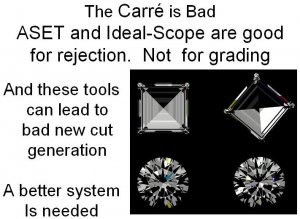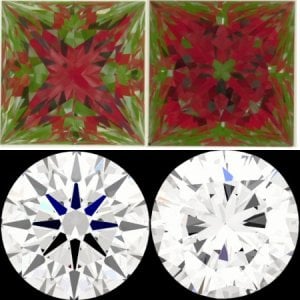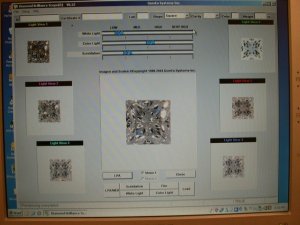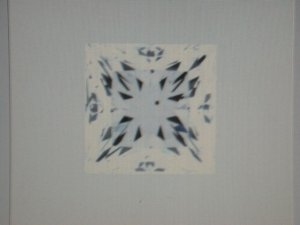- Joined
- Aug 29, 2003
- Messages
- 15,808
Date: 9/20/2005 3:53:44 PM
Author: denverappraiser
...Frankly, I haven’t really decided if this tidbit is useful or not. (#1)
There is a real tendency to try to define what is the best image and then to judge others against that standard and this strikes me as asking for trouble. (#2)
Neil,
Thank you for the answer...
Proposition #1 tells me that adding analytical detail to the images is not the way to improve things - there is virtually more than needed anyway.
Proposition #2 tells me that allot can still be done by finding a better interpretation of those images rather than the default drift towards 'splitting hairs'.
What I am thinking is that the reflector images are basically a model with the usual problem of trading parsimony for realism.
Since showing diamonds online as over the counter is not yet an option due to constraints well beyond the point of the discussion about 'scopes, the reflector technology may not have the call to progress towards a life-like image via adding detail. As analytic method, it gains by keeping things simple and promoting smart ways of looking at diamonds through electronic communication.
Just a 0.2 worth thought...

Jonathan,
I second your reply to this post too. With a tweak...
You say there should be room for personal preferences in the top cut grade , but there is a tendency to prefer 'absolutes'. Sure so. The cut grades are the only allowing for personal preferences by design, for the others leaving as little room as possible for interpretation seems to be clearly a good thing. Since cut is counted among the 'C's... the neighborhood may well induce further bias towards 'winner takes all' cut grading. So... if allowing for flexibility is a good thing, it has to be explained - unlike looking at diamonds, looking at asset pictures does not inspire aesthetic judgment so leads for such personal interpretation have to be laid out. The set of instructions for reading Asset images does not qualify, IMO.













300x240.png)